THNG018 - Leidashan Zhutong Hongcha 2024
Product detailed description
Overview
Tribal shaihong tea from Leidashan Mountain (雷达山), a small tea area at Nannuo Tea Mountain (南糯). The note "Shaiqinghongcha" (晒青红茶) refers to the type of red tea that is dried in the sun, a common Yunnan-style technique for making signature Yunnan red teas. The tea was made from a diverse mix of tea leaves (Huncai 混采) with a prevalence of mature tea trees (qioamu 乔木) and harvested in Autumn 2024 before it was processed into Yunnan red tea. The tea is sold as 200 g bamboo sticks stuffed with shaihong (zhutongcha 竹筒茶), a standard tribal method for processing local teas in the Menghai region (勐海). The tea was dry-storage in the Xishuangbanna Dai Autonomous Region in Yunnan Province. The bamboo used for stuffing sharing is called Xiangzhu (香竹), which, unlike some other bamboo, provides an extra taste layer to the tea.
Tea sourcing and background
This tea was generously provided by Leer, who produced this tea in his small tea factory near Shuihe village (Shuihexinzhai 水河新寨) in Menghai Region (勐海 Menghai). He belongs to the Hani tribe (哈尼), and we have known each other since 2018, when we visited Shanshan's sister-in-law part of the family in Gelanghe (格朗和). In early 2010, he used to live on the Leidashan close to his tea garden. After several years, he built a family house downhill and established his own small tea factory in 2015. Despite COVID-19, his teas were highly demanded, which allowed him to invest in a new teahouse, more advanced machines and better off-road car. Apart from producing his own teas, he loves travelling and exploring contemporary innovations in tea processing both in China and Southeast Asia, particularly Vietnam and Laos.
In early 2025, we visited Leer's tea gardens and bought this tea bamboo since we really fall in love in his teas. During our stay, we carefully observed his tea gardens and tasted several teas (particularly loose tea 毛茶). After drinking, we were really amazed by this shaihong stuffed in bamboo, which has so much fruitiness and mouth-watering feeling that are more often present at higher grades of teas. His tea gardens are located a few kilometres uphill at an altitude of about 1800 m.a.s.l. and it takes around 20 minutes by car and another 20 minutes to get there. The fauna is vibrant and very diverse, with a combination of tea trees (qiaomu 乔木 and gushu 古树) and other exotic plants. The way to the tea garden was quite steep and relatively wet due to the presence of the small marches and streams, even during the dry season. While this tea does not present the selection of top quality tea trees over 100 years (gushu 古树) that will otherwise significantly increase the sweetness, complexity and thickness of the tea, the taste of this tea is very enjoyable, and it highlights the deepness and value of Xishuangbanna teas.
Suggested preparation
Similarly to other Banna teas, producers prefer classical porcelain gaiwans (130-200 ml) and short infusions (matter of seconds) to better evaluate the taste. Like the majority of Banna people, they use mountain water. For more information, check out the "Preparation" section.
Tea profile (akt. 21-03-2025)
The tea was evaluated in the 180 ml / 150 ml porcelain gaiwains, which are more neutral for analyzing the taste of tea. We used the standard Banna brewing method (95-99˚C, depending on the altitude) and used 7-8 g of tea (1 g = 18-25 g, depending on the tea type and form), a standard dosage suitable for drinking with more tea lovers. We used the tap water from Prague 1 (a mix of Káraný, Želivka and Podolí) and a charcoal-based filter to soften the water.
The tea is tested on a monthly and biennial basis. This helps us to better understand the tea ageing process in European conditions (similar to those in Kunming, a capital city of Yunnan Province) and sort out various interferences such as weather conditions, year seasons, mood, etc. Although any tea evaluation is very subjective and strongly depends on personal sensitiveness as well as many other factors (see above), our goal is to tangibly describe the tea for all tea lovers who cannot visit us at our Tea Chamber and personally taste the tea with us.
To describe the tea, we narrate the taste according to familiar European flavours and standard Chinese terminology. Although such an approach may simplify unique taste nuances that you can find only in Xishuangbanna and may not fully interpret the scope of all tea properties, we plan to elaborate more detailed reviews and comparisons in separate articles in the future.
- Aroma: A milky scent with sweet honey notes
- Colour: The tea turns from dark orange-brown tones to transparent red-ochre shades
- Body: Smooth and watery
- Taste: Stonefruit lemonade (apricots, peaches and cherries) and spices (clover, cardamon and cinnamon) with milky, pine tree and honey tones
- Aftertaste: Pleasant sweetness and strong mouth-water feeling
Additional parameters
| Category: | Teas |
|---|---|
| Distributor: | Leer |
| Packing: | 200 g |
| Tea mountain: | Nannuo 南糯 |
| Year: | 2025-2019 |
| ? Producer / Výrobce: | FH-04, Leer, Hani (哈尼) |
| ? Location / Oblast: | Leidashan (雷达山), Nannuo (南糯) |
| ? Harvest / Sklizeň: | Q3/2024, ± 1800 m.a.s.l. |
| ? Quality / Kvalita: | Huncai (混采) |
| ? Type / Druh: | Shaihong (红茶), Shaiqing maocha (晒青毛茶) |
| ? Rating / Hodnocení: | Premium quality (4/5) |
| ? Best before / Minimální trvanlivost: | unlimited / 20XX |


















